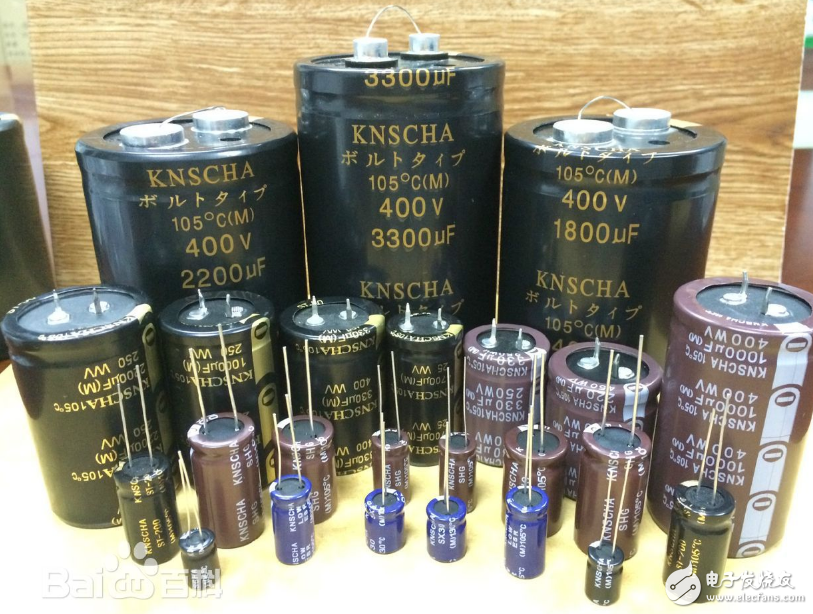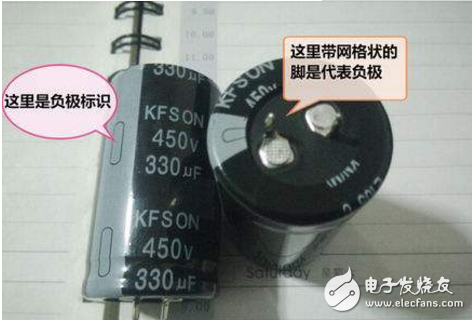In electronic circuit design, the electrolytic capacitor is connected to the DC and is also used to store and release the charge to act as a filter to smooth out the output pulse signal. How does electrolytic capacitor distinguish its positive and negative poles in circuit design? If it is reversed, it can be dangerous. The capacitor with large capacity may even have an explosion hazard. Let's take a look at how to use a multimeter to judge the positive and negative electrodes of the electrolytic capacitor.
1. Introduction to electrolytic capacitorsThe electrolytic capacitor is a kind of capacitor. The metal foil is a positive electrode (aluminum or tantalum), the oxide film (aluminum oxide or tantalum pentoxide) which is in close contact with the positive electrode is a dielectric, and the cathode is made of a conductive material or an electrolyte (the electrolyte may be a liquid or Solid) is composed of other materials. Since the electrolyte is the main part of the cathode, the electrolytic capacitor is named after it. At the same time, the electrolytic capacitors are not connected correctly.
The electrolytic capacitor is divided into two types: non-polarity and polarity. The non-polar electrolytic capacitor adopts a double oxide film structure, which is similar to the two negative-electrode capacitors that connect two negative electrodes. The polar electrolytic capacitor is usually in the power supply circuit or The intermediate frequency and low frequency circuits function as power supply filtering, decoupling, signal coupling, time constant setting, and DC blocking.

Electrolytic capacitors are widely used in household appliances and various electronic products. Polar electrolytic capacitors usually function as power supply filtering, decoupling, signal coupling, time constant setting, and DC blocking in power supply circuits or intermediate frequency and low frequency circuits. Non-polar electrolytic capacitors are commonly used in speaker divider circuits, television S correction circuits, and start-up circuits for single-phase motors. The role of electrolytic capacitors is mainly divided into the following categories:
1) DC blocking - the role is to prevent DC from passing and let the AC pass.
2) Filtering----In the power supply circuit, the rectifier circuit turns the alternating current into a pulsating direct current, and after the rectifier circuit, a large-capacity electrolytic capacitor is connected, and the charging and discharging characteristics (storage energy) are used to make the rectification The post-pulsating DC voltage becomes a relatively stable DC voltage.
3) Coupling----In the process of transmission and amplification of low-frequency signals, in order to prevent the static working points of the two-stage circuit from interacting with each other, capacitor coupling is often used. As a connection between the two circuits, the AC signal is allowed to pass through and is transmitted to the next stage circuit.
4) Bypass—provides a low impedance path for some of the parallel components in the AC circuit.
5) Energy Storage----Storage of electrical energy for release when necessary.
6) Temperature compensation----compensate for the influence of other components on the temperature, and compensate for the stability of the circuit.
7) Tuning—System tuning of frequency-dependent circuits, such as cell phones, radios, and televisions.
3. Use a multimeter to judge the positive and negative electrodes of the electrolytic capacitor.Electrolytic capacitors have positive and negative poles. Generally, the length of the lead is positive, and the short one is negative, and is marked with "one".

Zhejiang Best Nail Industrial Co., Ltd. , https://www.beststaple.com